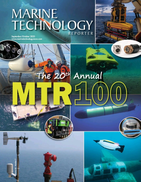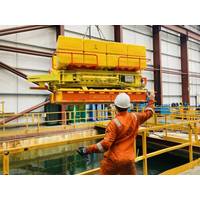
Strategic Move Brings Decom Engineering's Base to Aberdeen
participate in key events, the move to Aberdeen is the right one at the right time,” said Nick McNally, Decom Engineering commercial director.The Aberdeen base will also be the focus for Decom’s Pipe Coating Removal service which unlocks the asset value of oil and gas tubulars by stripping steel pipes of multiple coatings so that they can be repurposed for use in a variety of construction projects
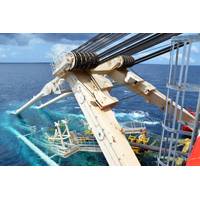
DNV's New Standard for Hybrid TCPs Set to Improve Deepwater Projects Reliability
armor into flexible riser designs to enhance efficiency and reliability for deepwater projects.The DNV-ST-F207 standard addresses the challenges faced by conventional risers in deepwater applications, where high top tension and corrosive environments are common.TPCs have been challenging traditional steel pipes in the last decade by offering a light, ductile, spoolable and corrosion-free solution for transportation of liquids and gases.The primary objective of the DNV-ST-F207 standard is to facilitate the integration of innovative technologies, such as carbon fiber armor, into flexible riser designs
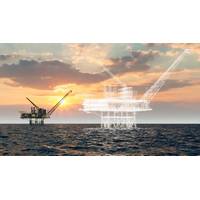
ABL Gets Neptun Deep Job for OMV Petrom in Black Sea
fields in the Neptun Deep block.OMV Petrom is the operator, with each company having a 50% interest in the project.Later that year, Corinth Pipeworks, as a subcontractor of Sumitomo Corporation Europe, won a contract to manufacture and supply approximately 160 km of longitudinally submerged arc-welded steel pipes (LSAW) for the development of an offshore natural gas pipeline for the project.Romania: Neptun Deep Offshore Project Enters Development PhasePipeline Construction Contractor Selected for Romanian Offshore Gas Projec
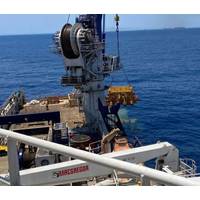
Decom Engineering Enters Australia with Triple Contract Win
market and we are keen to be part of the sector's journey to sustainability,” said Sean Conway, Decom’s managing director.In time, Decom also plans to introduce its Pipe Coating Removal (PCR) system to Australia to offer a full-service decommissioning option for redundant oil and gas steel pipes.The PCR strips steel tubulars of all coatings and transforms the pipe into a reusable product suitable for construction projects and other uses, while decreasing carbon footprint and returning value to the asset owner, according to the company."To date our PCR system has processed more than
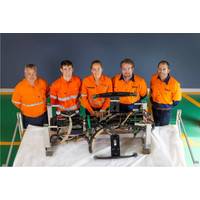
Robotics: Collaboration Pushes Boundaries of Offshore Cleaning and Inspection
, developed and deployed in less than 12 months via a collaboration led by Woodside Energy (Woodside) and incorporating Perth-based expertise from Nexxis, Monadelphous, WOMA, and Fugro.The CCAIT system incorporates a human-sized robot, designed to inspect the inside of caissons - vertical carbon steel pipes up to 70m long and up to 1.2m wide. These structures are used on offshore platforms to house critical equipment such as firewater and seawater lift pumps.In response to possible COVID-related supply chain risks, a local solution was sought, inspiring the collaboration.The CCAIT system is remotely
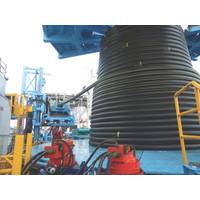
MTR100: Aquatic Engineering & Construction Ltd.
kits to be installed on relatively small vessels from more economical quayside locations, if required. Aquatic has tried and tested products and solutions for the installation, recovery and replacement of flexible products, onshore transpooling operations, the handling of flexibles, umbilicals and steel pipes, fleeting control, rapid cutting, straightening steel pipe and coiled tubing, multiple reel lay and ancillary products to assist in the spooling, deployment and recovery operations. Aquatic can install, replace and recover semi-rigid products such as coiled tubing; mooring lines; power
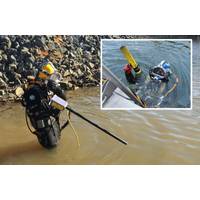
Tracking Underwater Pipes and Cables
to find these lines with conventional metal detectors as the burial depth is beyond their detection range. Two pieces of equipment that have proved most effective are the pinpointing magnetometer and the cable tracker. The pinpointing magnetometer is a very sensitive instrument that locates iron and steel pipes buried up to 16 feet in the bottom, and the cable tracker is powerful enough to detect a power or communications cable at more than 30 feet away. New Jersey based Castle Group is employing both of these devices in their operations. The group consists of three firms; WJ Castle and Associates
Shell Tests Off-Site Rig in Office Backyard
rig since its installation in 2008. “But this is the heart of Shell research and development operations.” Power and precision One week Cor and his team might be test-running software that will monitor and control an unmanned drilling rig. Another week they could be testing expandable steel pipes. “We measure everything in the tests with the utmost precision,” says Cor. “The entire rig is full of sensors that enable us to analyse what is happening at any moment in any part of the rig or drilling hole.” The test rig has the same capabilities as a rig in the
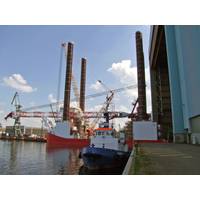
Wind Server Gets its Legs
Rostock-Warnemünde, Germany, today the fourth and last steel jack-up leg was settled into its jacking position on the wind turbine service vessel WIND SERVER, currently under construction at Nordic Yards in Wismar for Danish customer DBB Jack-Up Services. During the past eight days the four huge steel pipes, which were transported to the Wismar shipyard by sea from Cuxhaven, were vertically raised and installed one by one with the aid of a giant lattice boom crane supplied specially for this project. Assistance was provided by the floating crane ‘Enak’, which from the opposite base helped

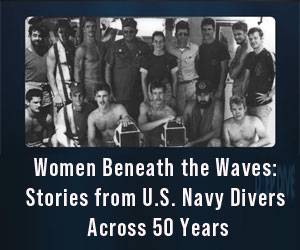
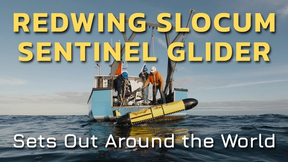
 August 2025
August 2025


